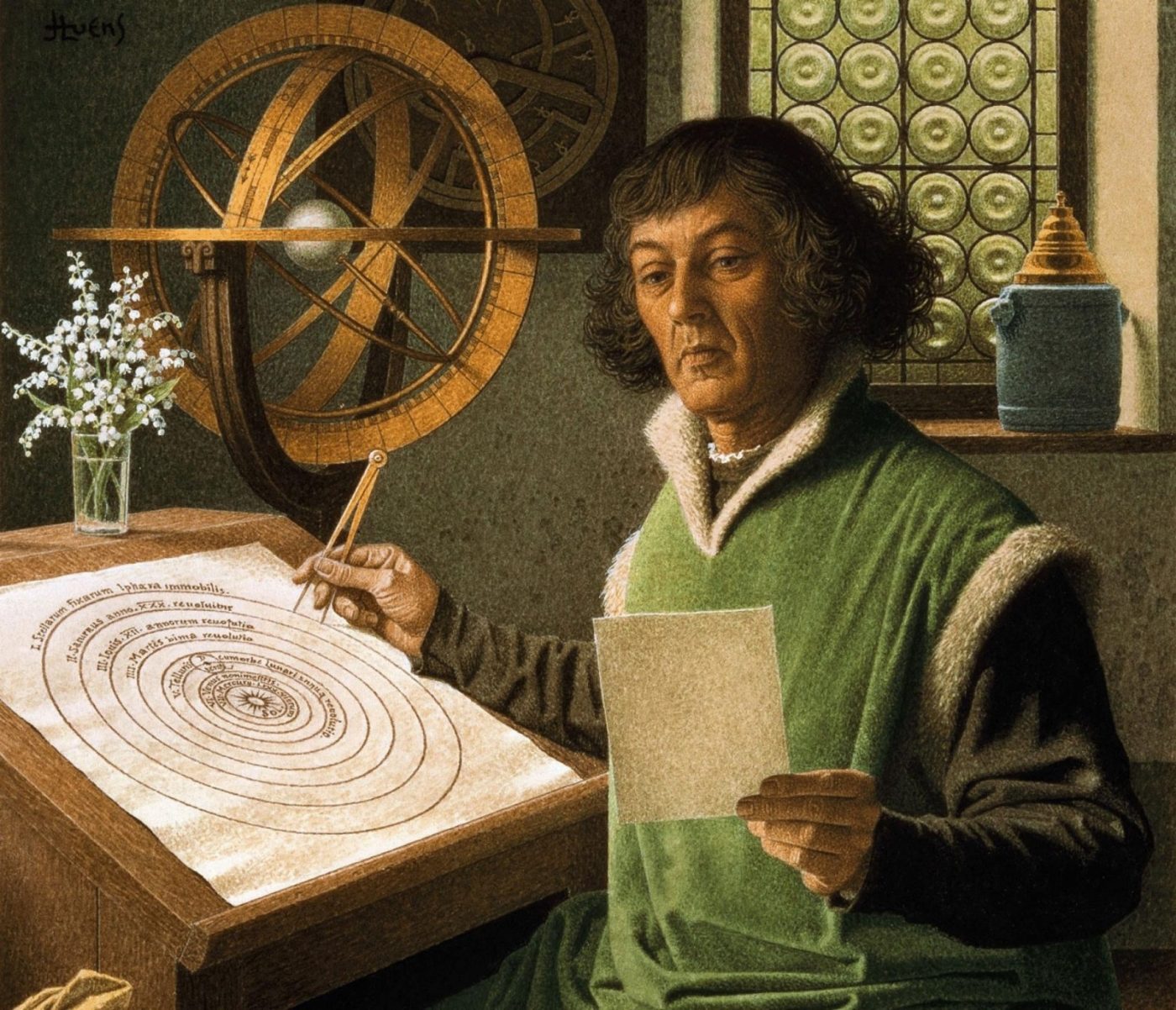Who is Nicolaus Copernicus, the founder of modern astronomy?
Copernicus: Catholic advisor to the Ermland fiefdom of the Prussian Empire, amateur scientist engaged in spare time mathematics, astronomy and cartography.

Nicolaus Copernicus (Mikolaj Kopernik) was born on February 19, 1473 in Torun (Poland). When his father died at an early age, Copernicus took care of his five children. Copernicus never married. After completing his basic education, he attended school in Kraków, Poland in 1492, specializing in mathematics, astronomy and optics. He also studied medicine to become a doctor. In his spare time he painted and translated Greek poems into Latin.
He went to Italy at the urging of his uncle. He studied for six years in the fields of astronomy, mathematics, law and medicine in distinguished universities of the period such as Bologna, Padua and Ferrara. After working as a professor of mathematics in Rome for a while, he returned to his country. In addition, he continued various government services. Copernicus also represented his country as a diplomat in foreign affairs for a while. However, his main interest was astronomy. His masterpiece On the Rotations of the Celestial Spheres, the product of thirty years of uninterrupted work, was published at the insistence of his friends. The first copy of his book reached Copernicus in his sickbed in the last days of his life.
Copernicus detailed his views on astronomy in his great book De hypothesibus motuum coelestiumase constitutis commentariolus (Commentary on the Assumptions Concerning the Motion of the Celestial Bodies). The book was published in 1543, shortly before Copernicus' death.
Even as a student, Copernicus was skeptical of the Ptolemaic theory. Especially his teacher Novara had a great influence on this doubt. According to Ptolemy's theory, the sky was a rotating sphere with "pebbled" stars. The Earth had a fixed position at the center of this sphere. It was surrounded by a series of interlocking crystal balls containing the moon, sun, and planets.
In an attempt to simplify and make astronomy coherent, Copernicus appealed to a hypothesis rooted in classical times. He realized that the rising and setting of the Sun, Moon, and stars was caused by the Earth's rotation around itself.
In fact, the system he established was not entirely correct either. According to Copernicus, the Sun stood motionless in a fixed place at the center of the universe, and the planets revolved around it. Farther out, there were other stars, like the Sun, that stood still. Later, it was revealed that the Sun is only one of the countless stars in the universe and that all these stars are constantly moving in space along with the planets.
As is known, the theory of Copernicus includes two basic assumptions: (1) The celestial spheres carrying the planets revolve around the sun, not the earth. (2) The Earth is not stationary at the center, it rotates daily on its axis and in annual rotations around the sun.
In the 17th century, Italian astronomer Galileo Galilei revealed the wrong aspects of Copernicus' theory.
Copernicus died in Frombork on May 24, 1543, at the age of 70.
